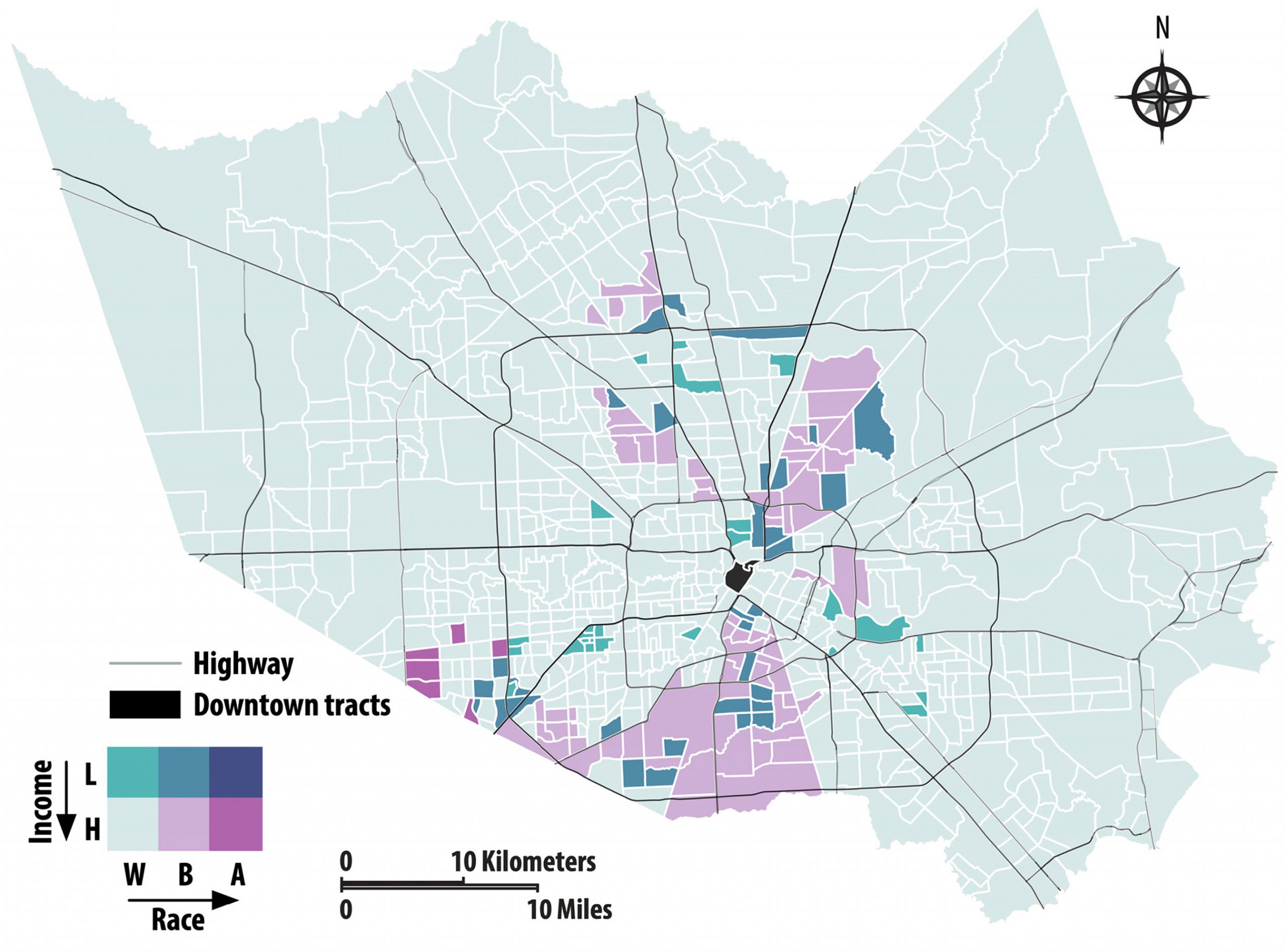
New article first published online: Environment and Planning A: Economy and Space
ABSTRACT: The spatial dimension of the journey-to-work has important implications for land use and development policymaking and has been widely studied. One thrust of this research is concerned with the disaggregation of workers into subgroups for understanding disparities in commute. Most of these studies, however, were limited to the disaggregation by single socioeconomic class. Hence, this research aims to examine commuting disparities across commuter subgroups stratified by two socioeconomic variables—income and race—using a visual analytics approach. By applying the doubly constrained spatial interaction model to the 2014 Longitudinal Employer-Household Dynamics data, this research first synthesizes commuting flows for Downtown Houston workers across income-race subgroups at the tract level in Harris County, Texas, USA. It then uses bivariate choropleth mapping to visualize the spatial distributions of major Downtown Houston commuter neighborhoods by income-race classes, and significant commuting disparities are identified across income-race subgroups. The results highlight the importance of considering income and race simultaneously for commuting research. The visualization could help policymakers clearly identify the unequal commute across worker subgroups and inform policymaking.